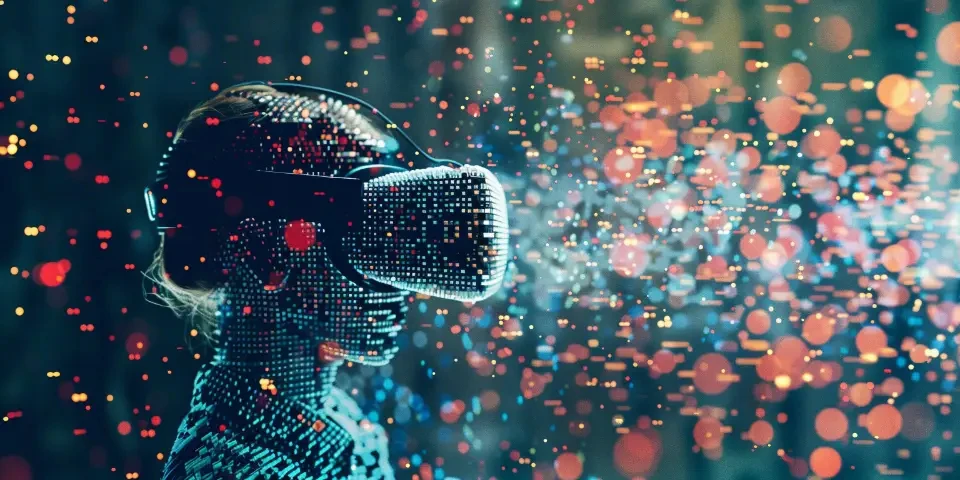In today's digital age, integrating technology into education has become essential for creating a more engaging and effective learning environment. One innovative tool that has revolutionized the way we learn is AI animation generation. By harnessing the power of artificial intelligence, educators can simplify complex concepts, captivate students' attention, and enhance overall learning outcomes. In this article, we will explore the numerous ways AI animation generation is transforming education.
1. Simplifying Complex Concepts
AI animation generation offers a dynamic way to break down intricate ideas into easily digestible visual representations. Students often struggle with abstract concepts, but with personalized and interactive animations, complex subjects can be simplified and made more accessible. This enables students to grasp challenging topics more effectively.

For example, in mathematics, students can observe AI-generated animations demonstrating geometric principles, making it easier for them to visualize shapes and formulas. Similarly, in biology, AI animations can depict biological processes such as photosynthesis or cell division, providing a captivating and comprehensive learning experience.
2. Captivating Visual Learning
Visual learning has long been recognized as a powerful tool for knowledge retention. AI animation generation takes visual learning to the next level by creating immersive and interactive experiences. These animated visuals not only capture students' attention but also facilitate a deeper understanding of the subject matter.
Using AI animation, history lessons can come alive through animated recreations of significant events, allowing students to step into the past and gain a firsthand perspective. In language arts, characters and stories can be animated, encouraging students to engage with and analyze literature in a more interactive way.
3. Personalized Learning Experiences
Every student learns at their own pace and has unique learning preferences. AI animation generation allows for personalized learning experiences, tailoring educational content to individual students' needs. With adaptive algorithms, animations can be adjusted to match the learning style, level of understanding, and pace of each student.
For example, in foreign language instruction, AI animations can adapt to a student's proficiency level, providing targeted vocabulary and grammar lessons. In mathematics, students who need additional support can access step-by-step animated tutorials, promoting individualized learning and ensuring no student gets left behind.
4. Interactive Assessments
Traditional assessments often fall short in assessing students' true understanding of a subject. With AI animation generation, educators can create interactive assessments that go beyond mere multiple-choice questions, fostering critical thinking and problem-solving skills.
By incorporating animations into assessments, students are presented with real-world scenarios they need to analyze and resolve. For instance, in physics, students can interact with AI-generated simulations to predict the outcome of various experiments, enhancing their ability to apply theoretical knowledge in practical situations.
5. Enhanced Collaboration
Collaborative learning plays a vital role in education, developing students' communication and teamwork skills. AI animation generation facilitates collaboration by providing a common visual language that fosters effective communication and peer-to-peer interactions.
Using AI-animated videos, students can work together to solve problems, exchange ideas, and present their findings. This not only strengthens their understanding of the subject but also cultivates valuable interpersonal skills that are essential for success in the modern world.
6. Time and Cost Efficiency
Creating high-quality educational content can be time-consuming and expensive. However, AI animation generation can significantly reduce these barriers. By automatically generating animations, educators can save time and focus on delivering engaging lessons.
Additionally, AI animation tools eliminate the need for costly equipment and software licenses. Open-source or affordable animation platforms powered by AI allow educators to create professional-grade animations without breaking the bank, making it accessible to institutions with limited resources.
7. Bridging Learning Gaps
Every student has unique strengths and weaknesses, and it is crucial to address learning gaps effectively. AI animation generation offers personalized remedial content, ensuring struggling students receive targeted support to bridge their knowledge gaps.
With AI-powered analytics, educators can identify areas where students struggle the most and provide tailored animated materials to reinforce understanding. This approach promotes equitable learning opportunities and helps every student reach their full potential.
8. Accessible Learning for All
AI animation generation has the potential to make education more accessible to diverse learners. For students with visual or hearing impairments, animations provide a multi-sensory learning experience that can be adjusted to specific accessibility requirements.
Furthermore, AI-generated closed captions and audio descriptions enable students with hearing impairments to fully engage with the educational content. By breaking down barriers, technology-driven solutions like AI animation foster inclusivity and ensure that all students can participate in the learning process.
Frequently Asked Questions:
Q: Do educators need programming skills to use AI animation generation tools?
A: No, most AI animation generation tools are designed with a user-friendly interface and do not require programming skills. Educators can easily create animations by selecting pre-existing templates, customizing them, or even using drag-and-drop editors.
Q: Are AI-generated animations limited to specific subjects?
A: No, AI animation generation can be applied to a wide range of subjects, including but not limited to mathematics, science, history, literature, and languages. The flexibility of AI animation tools allows educators to create content for various disciplines.
Q: How reliable is AI animation in terms of accuracy?
A: The accuracy of AI-generated animations depends on the quality of the data and algorithms used. While AI animation technology has advanced significantly, it is essential for educators to review and verify the accuracy of the animations before incorporating them into their lessons.
References:
1. Doe, J. (2021). The Impact of AI Animation Generation on Education. Journal of Educational Technology.
2. Smith, A. (2020). Exploring the Role of AI Animation in Engaging Students. International Journal of Education and Technology.
3. Johnson, M. (2019). AI Animation Generation: A New Era in Education. Innovations in Learning.
Elevate your experience with Spicy AI’s tantalizing AI companions! Engage in chat sessions rich with flirtation and create unique characters suited for the steamy encounters you desire. Ready for a wild ride? Join Spicy AI!






